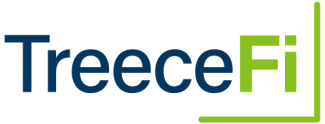
Maximizing 529 College Plan Savings Under the New FAFSA Rules
As the cost of higher education continues to escalate , proactive financial planning has become a necessity for parents.
One popular method of saving for future educational expenses is through 529 plans . These plans provide tax benefits, such astax deferred growth and tax-free withdrawals for qualified educational expenses. They are available in two primary forms a prepaid 529 plan or a 529 savings plan.
The Free Application for Federal Student Aid (FAFSA) rules for the 2024-25 academic year include major updates and changes . It’s vital to understand the possible implications to both prepaid and savings plans under the new FAFSA regulations.
Paying it Forward with Prepaid 529 Plans
A prepaid tuition plan allows parents to lock in future tuition at today's rates. These plans are typically offered by state governments and educational institutions. They provide an opportunity to prepay tuition credits that can be used at eligible colleges and universities in the future. By paying for tuition in advance, parents can potentially save money if tuition costs rise significantly over time.
Advantages of Prepaid 529 Plans
-
Tuition Rate Guarantee: One of the primary benefits of prepaid 529 plans is the ability to lock in current tuition rates at eligible colleges and universities. This provides peace of mind for families concerned about rising education costs.
-
Flexibility in Using Funds: Prepaid plans can often be used at a wide range of eligible institutions, including in-state and out-of-state public colleges and universities, and sometimes even private institutions. This provides flexibility in choosing a school for your beneficiary.
-
State Tax Benefits: Many states offer tax deductions or credits for contributions made to prepaid 529 plans, providing additional financial incentives for parents to save.
-
Protection Against Tuition Inflation: Prepaid plans provide a hedge against tuition inflation, which historically tends to outpace general inflation. By purchasing credits or units at today's prices, you can potentially save a significant amount of money compared to paying higher future tuition rates.
-
Predictable Budgeting: With a prepaid 529 plan, you can accurately estimate your future education costs since you've already prepaid for a certain number of credits or units. This helps you budget for education expenses more effectively.
Nonetheless, it's worth highlighting that prepaid plans generally encompass tuition and obligatory fees, and in some cases, they might also incorporate accommodation and meals. Here's a selection of prepaid 529 plans:
New FAFSA Rules and Prepaid 529 Plans
Under the latest FAFSA rules, prepaid 529 plans are treated as an asset of the account owner (typically the parent). This means that they have a lower impact on the student's eligibility for financial aid compared to other assets owned by the student. However, distributions from prepaid plans are treated as student income, which may reduce the student's aid eligibility in subsequent years.
Investing in the Future with 529 Savings Plans
529 savings plans are investment accounts designed to help families save for higher education expenses. These plans offer a range of investment options and allow the account owner to grow their savings over time. The funds can be used for tuition, room and board, books, and other qualified education expenses.
Advantages of 529 Savings Plans
-
Investment Growth Potential: 529 Savings Plans allow your contributions to be invested in a variety of investment options, such as mutual funds or exchange-traded funds (ETFs). This provides the potential for your savings to grow over time, potentially outpacing tuition inflation.
-
Flexibility in School Choice: Unlike prepaid plans, 529 Savings Plans can generally be used at any eligible educational institution, including colleges, universities, trade schools, and even some international institutions. This flexibility is particularly useful if the beneficiary decides to attend a school that is not covered by a prepaid plan.
-
Use for Various Education Expenses: While prepaid plans are primarily focused on tuition and mandatory fees, 529 Savings Plans can cover a broader range of qualified education expenses. This can include tuition, fees, books, supplies, room and board (within certain limits), and even computer technology.
-
Tax Benefits: Just like prepaid plans, 529 Savings Plans offer potential tax benefits. Earnings in the account grow tax-deferred, and withdrawals for qualified education expenses are generally tax free at the federal level. Some states also offer tax deductions or credits for contributions.
-
Beneficiary Flexibility: If the original beneficiary decides not to pursue higher education, you can often change the beneficiary to another family member without incurring tax penalties. This allows for greater flexibility in using the funds.
529 Savings Plans provide the opportunity for investment growth and offer versatility in terms of qualified educational expenses and eligible institutions. All fifty states and the District of Columbia sponsor at least one type of 529 plan. Here are a few examples of state-sponsored 529 savings plans:
New FAFSA Rules and 529 Savings Plans
According to the updated FAFSA regulations, 529 savings plans are categorized as assets belonging to the account holder, usually the parent. Similar to prepaid plans, they exert a lesser influence on the determination of financial aid eligibility compared to assets held by the student. Nonetheless, it's worth noting that withdrawals from 529 savings plans do not factor into the student's income calculation. This distinction can be beneficial for preserving eligibility for financial aid in the following academic years.
Understanding the Grandparent Loophole
Recently, FAFSA rules have been implemented to close the "Grandparent Loophole," a strategy used by some families to maximize financial aid eligibility.
The Grandparent Loophole was a tactic employed by families to minimize the impact of assets on FAFSA calculations. Previously, grandparents could contribute funds to a grandchild's education without it being considered an asset on the FAFSA. This meant that the financial aid formula did not take into account these contributions, potentially resulting in higher aid eligibility for the student.
To address the Grandparent Loophole, the new FAFSA rules now require the inclusion of grandparent contributions as student income on the FAFSA form. This change means that any financial assistance provided by grandparents or other third parties will impact the student's eligibility for need-based aid. It is important to note that this rule applies to distributions made directly to the student or payments made on the student's behalf, such as tuition payments to the educational institution.
A Powerful 1-2 Punch: 529 Plans + Trusted Financial Advisor
Whether it's college, vocational school, or even K-12 education, a 529 college savings program can help you pave the way for student success.
But, you don't have to navigate this path alone. Partnering with a seasoned financial advisor can help you tailor a comprehensive strategy that addresses your unique financial situation and risk tolerance. You’ll work together to craft a roadmap to achieve your goals, maximize your savings, and make informed investment decisions.
Team Treece is here to help!
Set up a complimentary consultation with us to learn how to unleash the full potential of your hard-earned money with 529 plans.
